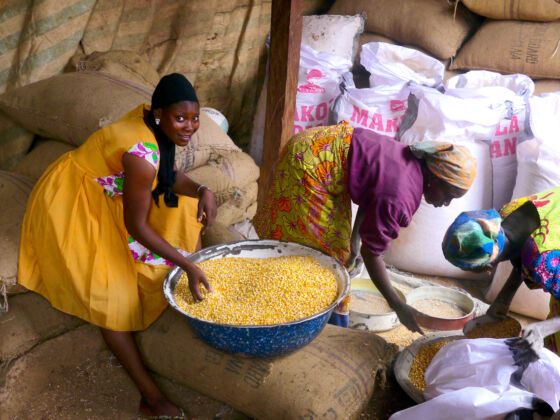Fufu in Ground Nut Soup
Usually served in a base of Ground Nut Soup, this cassava-based dish is a local favorite. Ground Nut Soup is basically peanut soup, with a thick peanut paste as the base. Vegetables, such as onions, red chilies, and tomatoes, are added and give the soup a spicy kick and an oily texture
Cassava, a starchy root vegetable, is boiled in water and then pounded in a mortar and pestle. Usually, one person will pound the substance while another uses their hand to rotate it in between each smash (which, to me, always appears like a dangerous situation).
To eat it, use the right hand to pull off a small piece and create a small indentation to scoop up some of the soup, then eat. Fufu reminded me of pulling a piece of gum apart as the consistency is quite thick and sticky and there’s no need to chew.
My companion Paul, a local Ghanaian, scolded me quite a few times, saying, “Stop chewing it! It’s already soft!”
I replied, “I can’t help it! When something’s in my mouth I chew it!”
